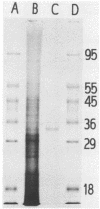Abstract
A xanthanase complex secreted by a consortium of heat-stable, salt-tolerant bacteria includes a lyase that specifically removes terminal pyruvated β-d-mannose residues from the side chains of xanthan gum. The enzyme was purified to homogeneity from the culture broth following ion-exchange chromatography and gel permeation chromatography. It consists of a single subunit of molecular weight 33,000. The enzyme is stable to 55°C for more than 6 h in 20 mM sodium phosphate buffer (pH 5.0) containing 0.25 M NaCl. Optimal enzyme activity was observed at 0.05 M NaCl and a pH of 5. The enzyme has a pI of 3.7. It does not remove unsubstituted terminal β-d-mannose residues from xanthan side chains nor does it hydrolyze p-nitrophenyl-β-d-mannose. Treatment of xanthan with purified lyase results in a polysaccharide containing side chains terminating in an unsaturated 4,5-ene-glucuronic acid.
Full text
PDF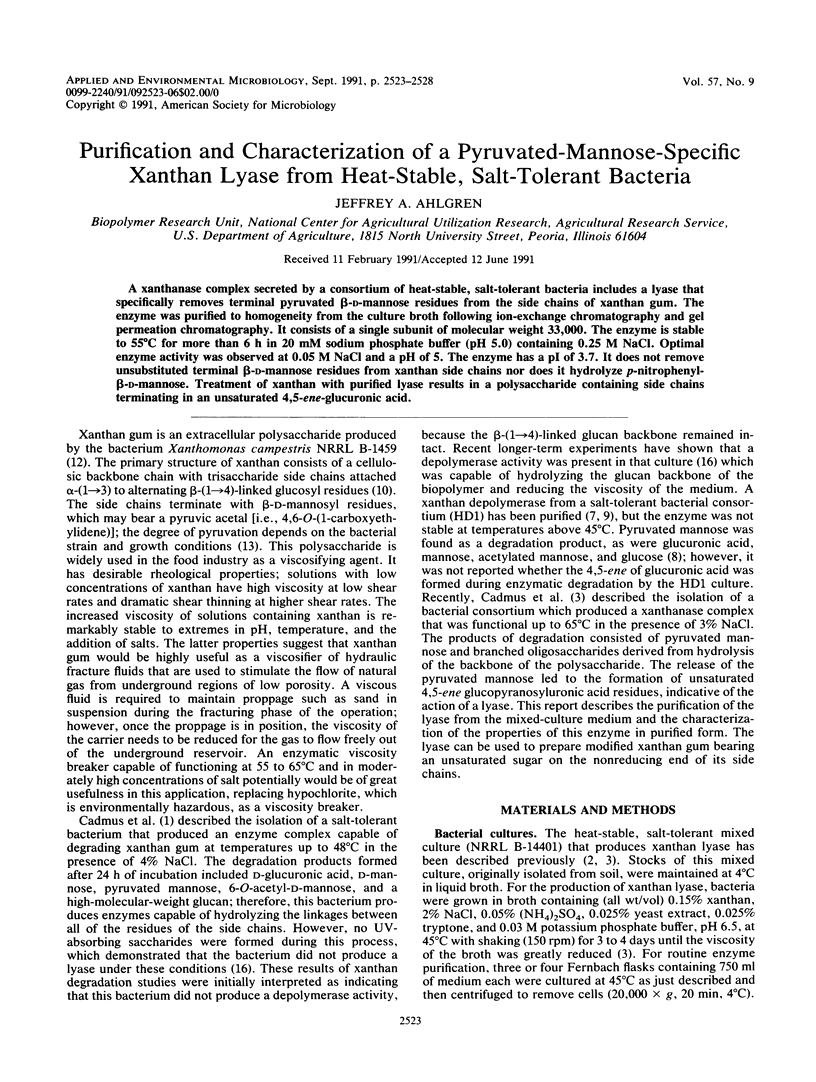

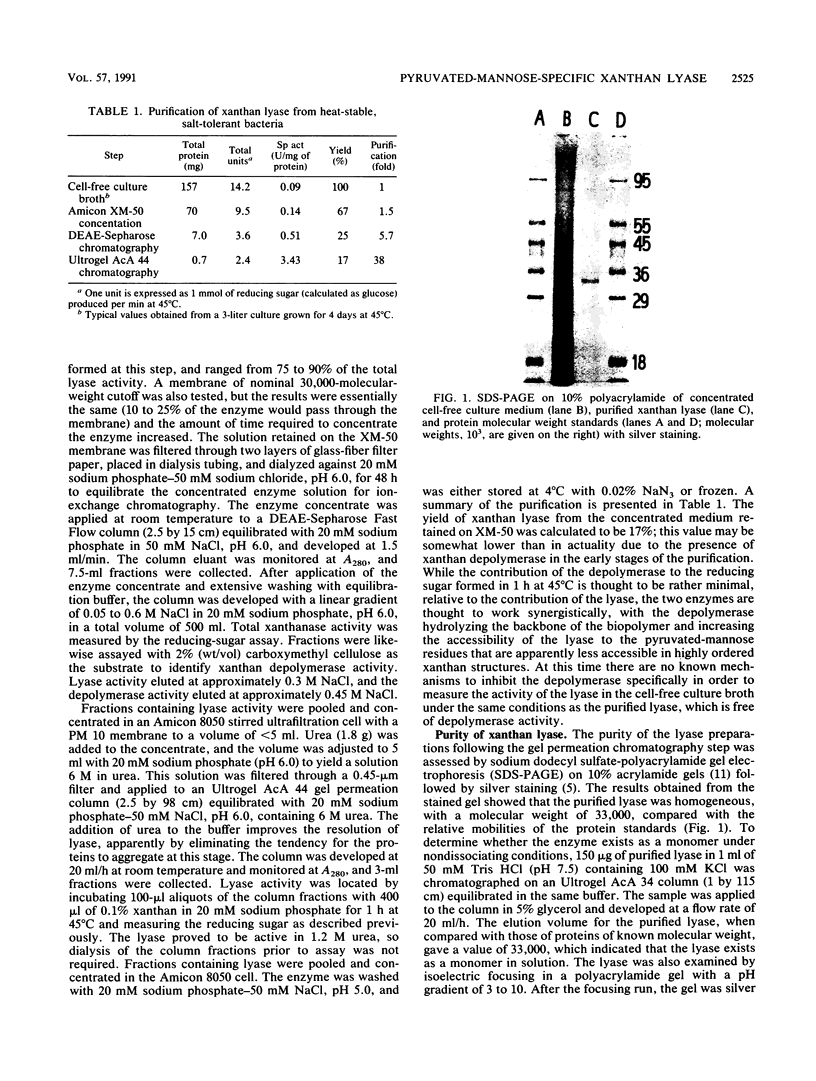

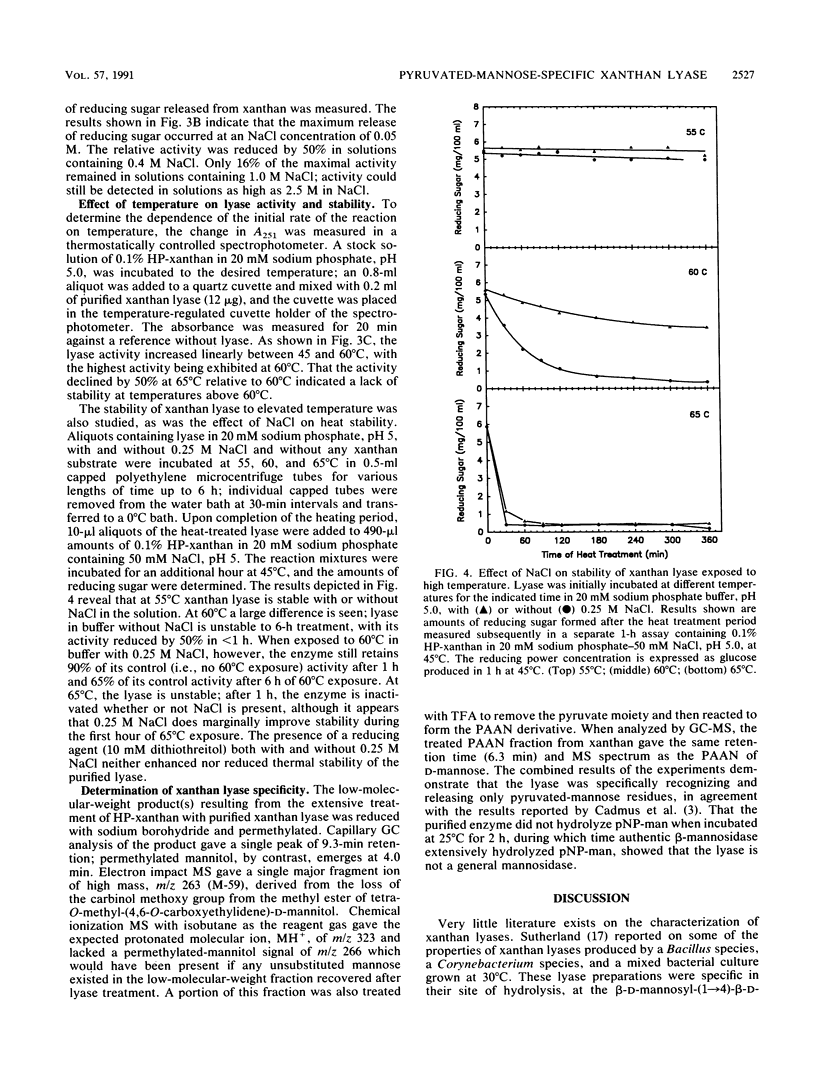
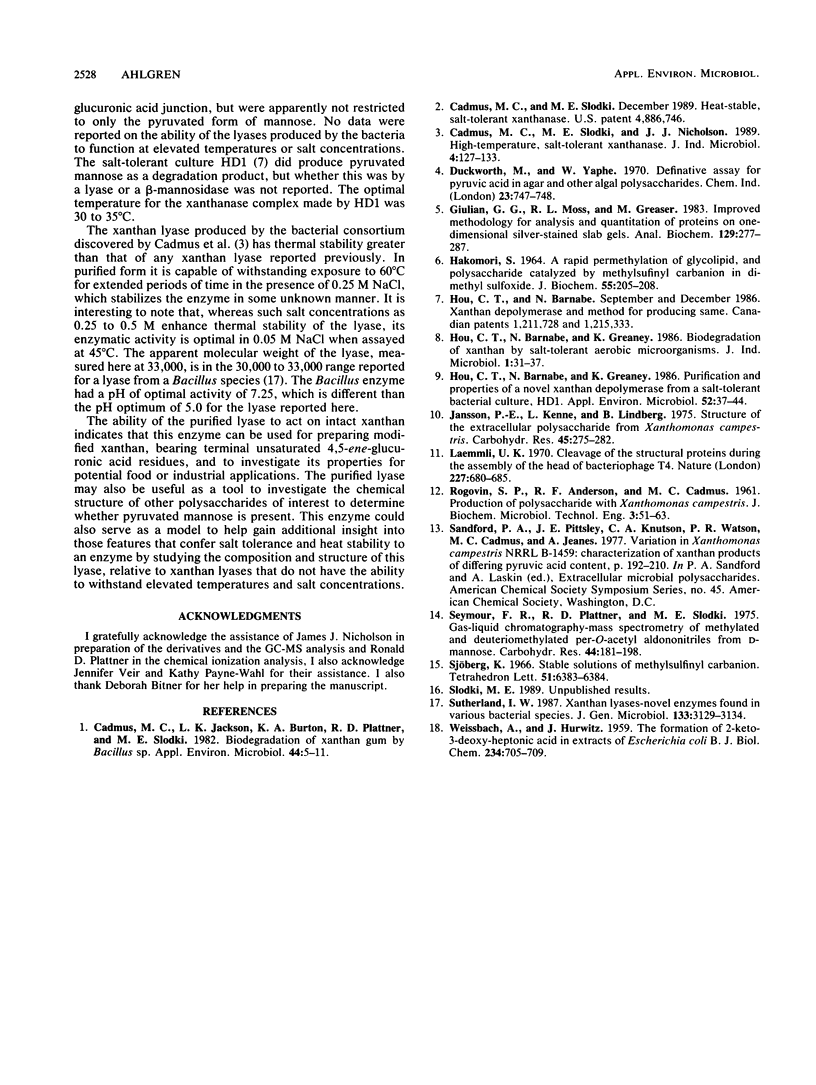
Images in this article
Selected References
These references are in PubMed. This may not be the complete list of references from this article.
- Cadmus M. C., Jackson L. K., Burton K. A., Plattner R. D., Slodki M. E. Biodegradation of Xanthan Gum by Bacillus sp. Appl Environ Microbiol. 1982 Jul;44(1):5–11. doi: 10.1128/aem.44.1.5-11.1982. [DOI] [PMC free article] [PubMed] [Google Scholar]
- Duckworth M., Yaphe W. Definitive assay for pyruvic acid in agar and other algal polysaccharides. Chem Ind. 1970 Jun 6;23:747–748. [PubMed] [Google Scholar]
- Giulian G. G., Moss R. L., Greaser M. Improved methodology for analysis and quantitation of proteins on one-dimensional silver-stained slab gels. Anal Biochem. 1983 Mar;129(2):277–287. doi: 10.1016/0003-2697(83)90551-1. [DOI] [PubMed] [Google Scholar]
- HAKOMORI S. A RAPID PERMETHYLATION OF GLYCOLIPID, AND POLYSACCHARIDE CATALYZED BY METHYLSULFINYL CARBANION IN DIMETHYL SULFOXIDE. J Biochem. 1964 Feb;55:205–208. [PubMed] [Google Scholar]
- Hou C. T., Barnabe N., Greaney K. Purification and Properties of a Novel Xanthan Depolymerase from a Salt-Tolerant Bacterial Culture, HD1. Appl Environ Microbiol. 1986 Jul;52(1):37–44. doi: 10.1128/aem.52.1.37-44.1986. [DOI] [PMC free article] [PubMed] [Google Scholar]
- Jansson P. E., Kenne L., Lindberg B. Structure of extracellular polysaccharide from Xanthomonas campestris. Carbohydr Res. 1975 Dec;45:275–282. doi: 10.1016/s0008-6215(00)85885-1. [DOI] [PubMed] [Google Scholar]
- Laemmli U. K. Cleavage of structural proteins during the assembly of the head of bacteriophage T4. Nature. 1970 Aug 15;227(5259):680–685. doi: 10.1038/227680a0. [DOI] [PubMed] [Google Scholar]
- Sutherland I. W. Xanthan lyases--novel enzymes found in various bacterial species. J Gen Microbiol. 1987 Nov;133(11):3129–3134. doi: 10.1099/00221287-133-11-3129. [DOI] [PubMed] [Google Scholar]
- WEISSBACH A., HURWITZ J. The formation of 2-keto-3-deoxyheptonic acid in extracts of Escherichia coli B. I. Identification. J Biol Chem. 1959 Apr;234(4):705–709. [PubMed] [Google Scholar]



